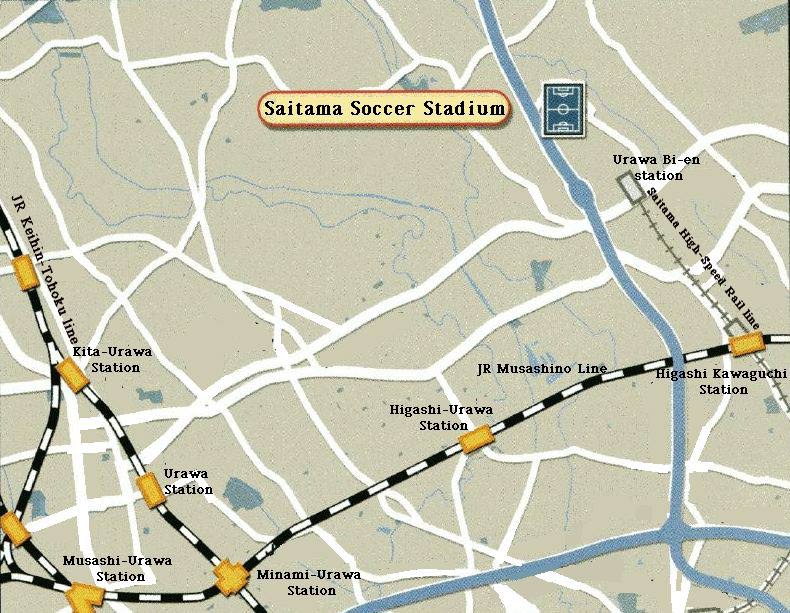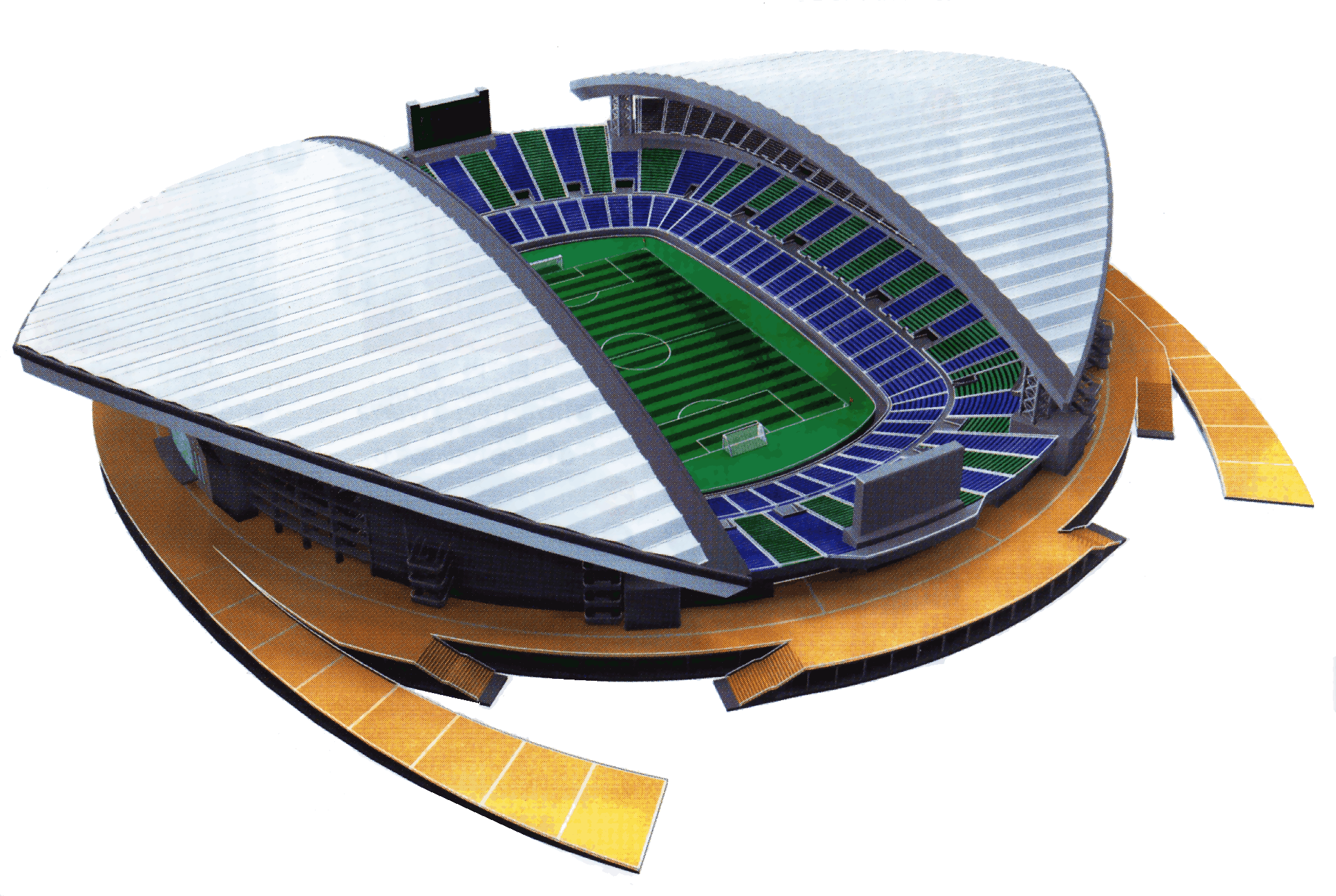Saitama Stadium 2002
Saitama City, Saitama Prefecture
 |
Saitama City was formed in 2001, when two neighboring cities -- Urawa and Omiya -- merged and took the name of the prefecture in which they are located as the name of this new metropolis. Both Omiya and Urawa have been very important towns for at least the past 600 years. Both are located along the Arakawa River, about 30 minutes north of Tokyo, in the midst of a vast and fertile plain that has been a center of rice farming since the middle ages. Omiya and Urawa became centers of light industry and crafts during the Edo era, and as modern Tokyo developed into a booming metropolis, these two cities grew apace, both as residential suburbs and as centers of "smokestack industries". Today, Saitama city is a heavily urbanized area, with a brash and energetic blue-collar character. The local population provides some of the most enthusiastic soccer fans in the entire country.
|
Both the Urawa Reds and their cross-town rivals, Omiya Ardija, attract a very devoted fan base, and both hold at least some home games at Saitama Stadium. The Reds fans, who are regarded as by far the most loyal and fanatical group of football fans in the country, make it their main home venue. With the completion of their new home facility, Saitama Stadium, the team established a consistent advantage over all other J.League clubs for total attendance in a season. Although the Reds are still struggling to turn the revenue advantage into a consistent source of title-winning success, they have remained a consistent top contender ever since the stadium was completed.
|
Even before the World Cup draw, tickets for the matches to be held in Saitama were being scalped over the Internet for many times face value. Those lucky individuals who managed to get tickets were not disappointed. Saitama Stadium was perhaps the most beautiful and most state-of-the art facility built for the World Cup 2002 Korea/Japan. With soaring triangular sails covering both banks of seats, and the intimate atmosphere of a football-only facility, many felt that this stadium should have been chosen as the site for the final, rather than Yokohama. However, Japan did play one of its World Cup pool matches in Saitama, and since then, it has hosted a major share of the Japan national team matches.
|
 |
In the years following the World Cup, the rise of the Urawa Reds as a league power has provided scenes of awe-inspiring impact, when Saitama Stadium fills to the rafters with a sea of red-shirted supporters. Its size, quality, and proximity to Tokyo also made it a top contender to hold big events, like the Nabisco Cup and Emperor's Cup finals during the period when Tokyo National Stadium is being rebuilt. If you are visiting Japan and have a chance to take in a match, Saitama Stadium should definitely be one of the first stops on your itinerary.
| Saitama Stadium 2002 |  |
Capacity: 63,700 |
| Home Team: Urawa Reds | Completed: July 2001 | |
| Location: Saitama City, Saitama Prefecture, Japan | ||
| Architects: Azusa Sekkei Co., Ltd. | General Contractor: Kajima Corporation | |
| Building Area: 54,420.00m2 | Total Floor Area: 62,674.00m2 | |
| Covered Area: 29,000m2 | Stand Inclination: Max. 30 degree angle | |
| Class & Type: Two-tiered stands of five stories above ground and a one-story basement) | ||
Stadium AccessSaitama Stadium is located in a rather secluded area some distance from Urawa's main rail station, and access is a bit difficult. The best route to the station is to take the Saitama High-Speed Rail line to its northern terminus, Urawa Bi-en. The stadium is about a 15 minute walk from the station along the only major road in the entire area. There are also shuttle bus services that leave from the bus stand outside the west exit of JR Urawa station on the Keihin Tohoku line, the bus stand outside the north exit of Higashi Urawa station on the JR Musashino line, and the bus stand outside the west exit of Koshigaya Station station, on the Tobu Isezaki line. |
 Click to enlarge |
 |
Ticket PricesAwaiting ticket price information for 2017 |


